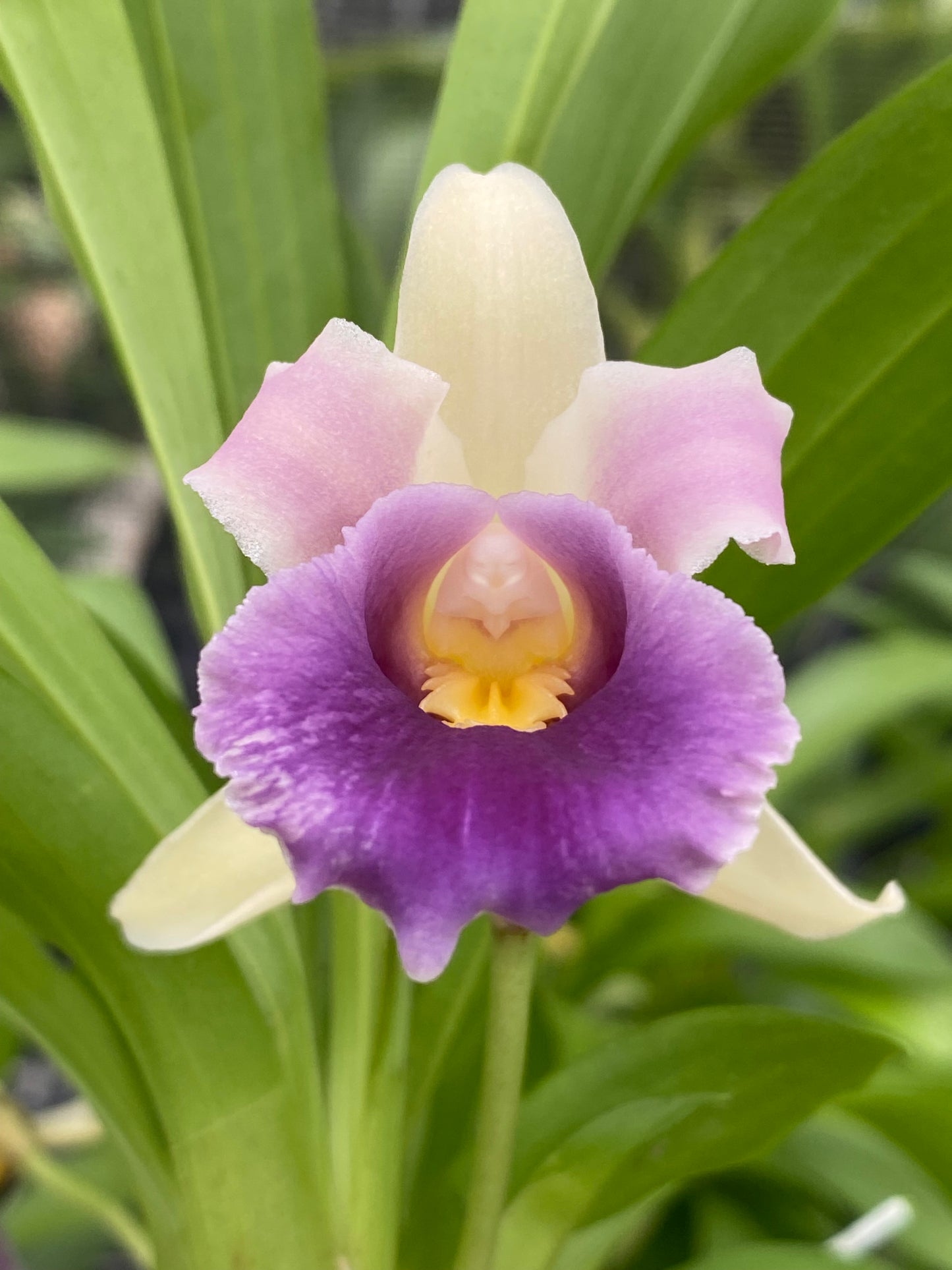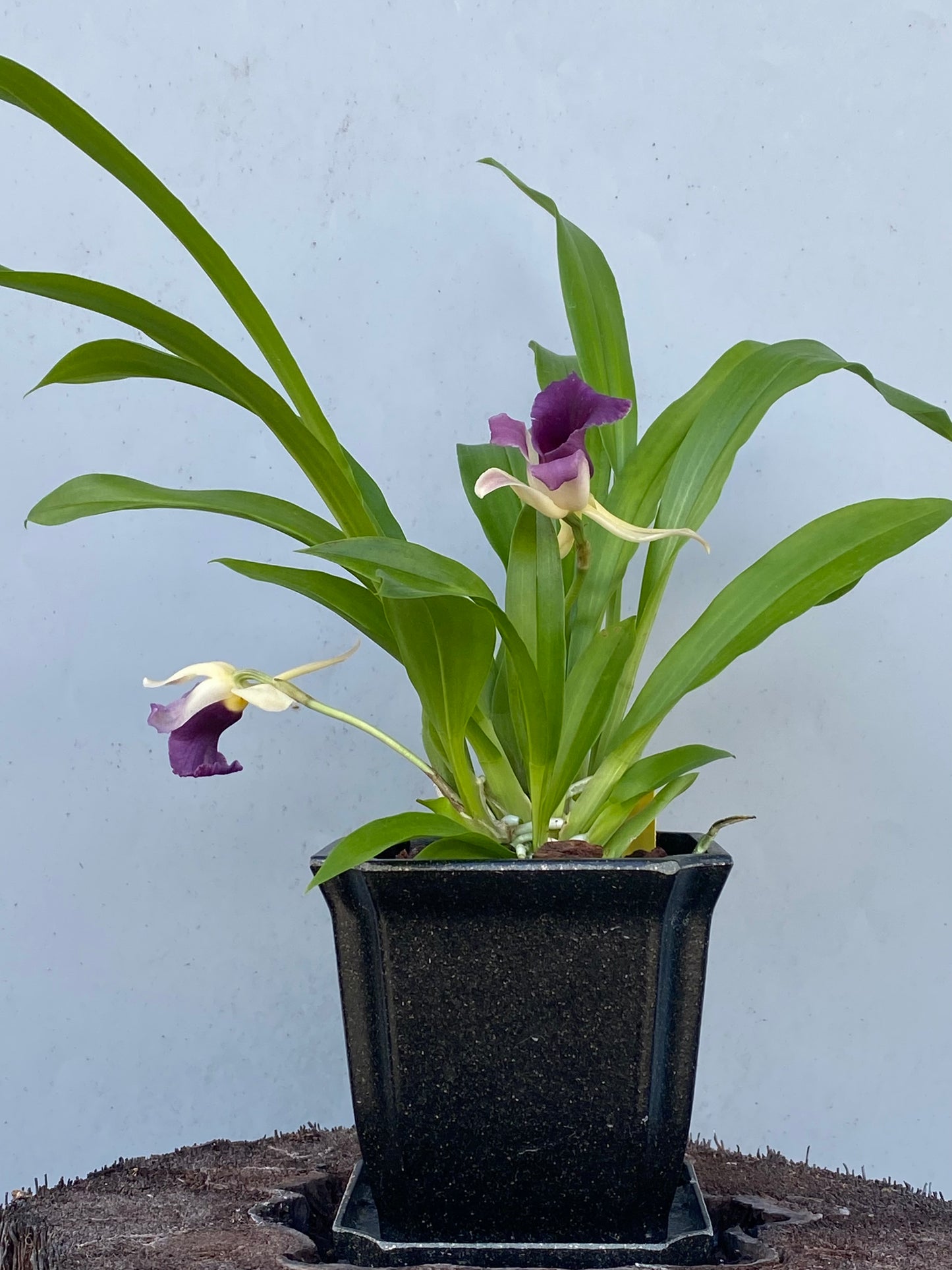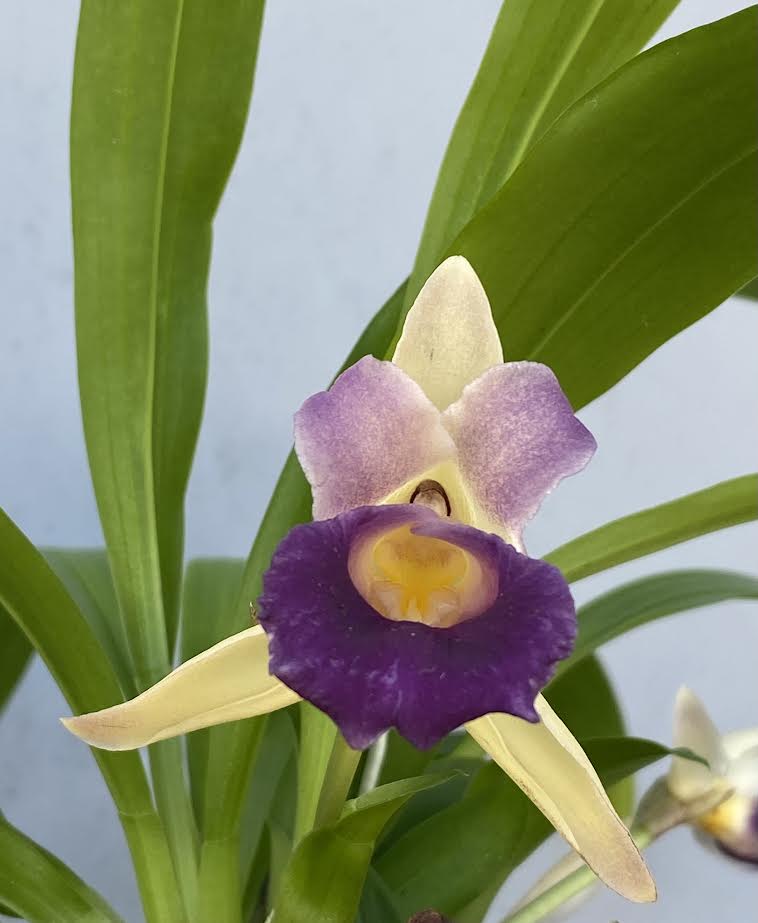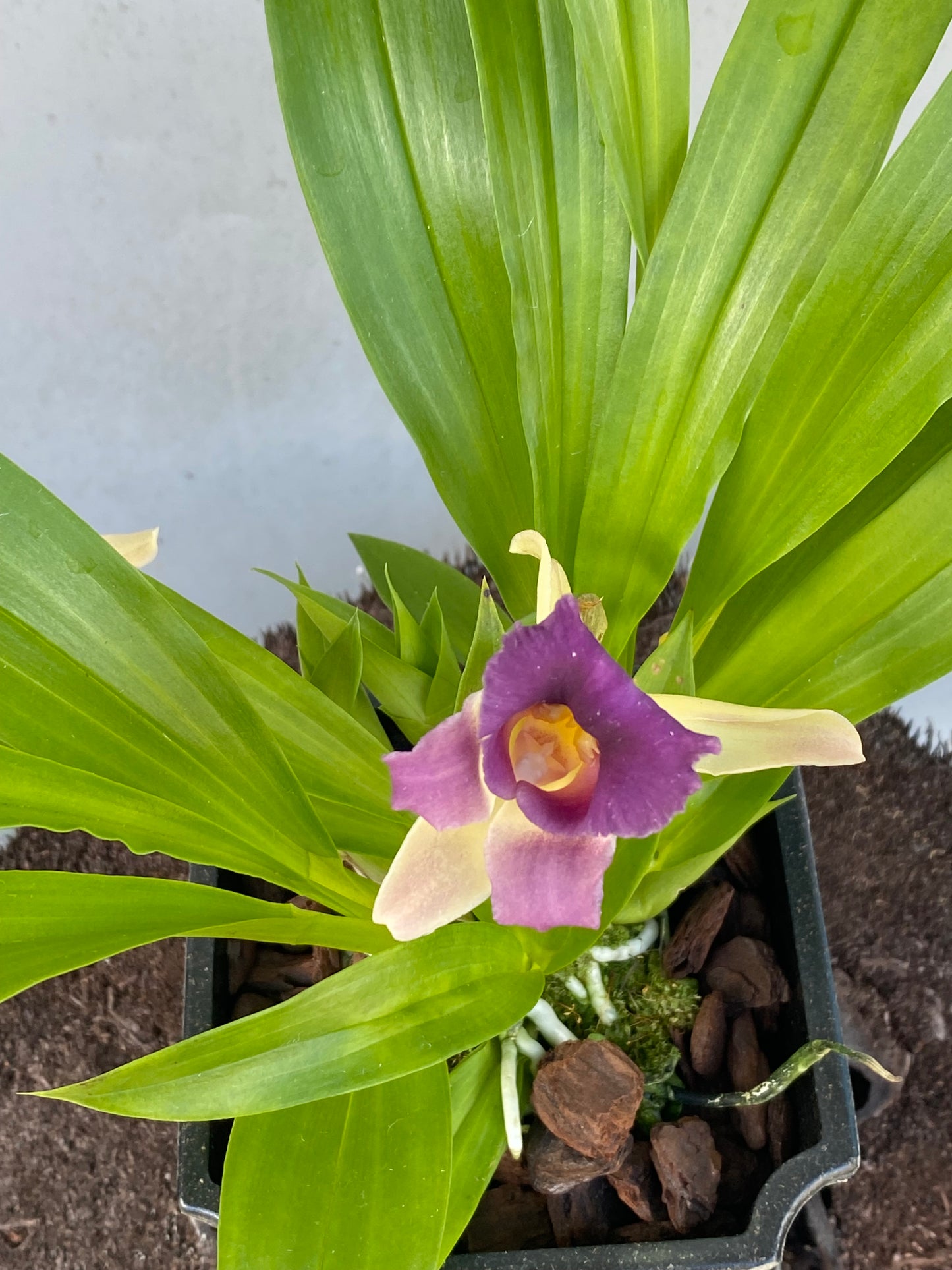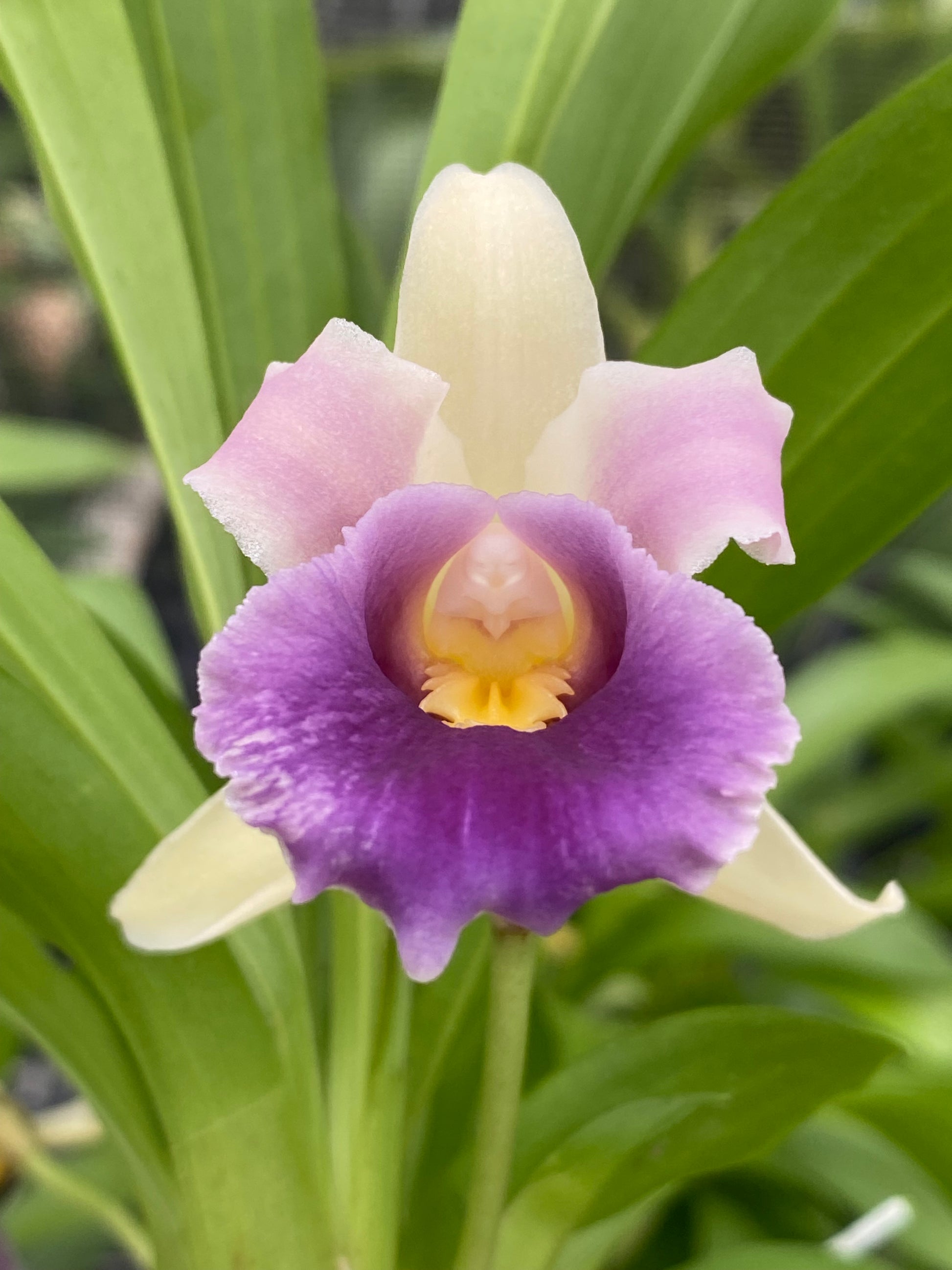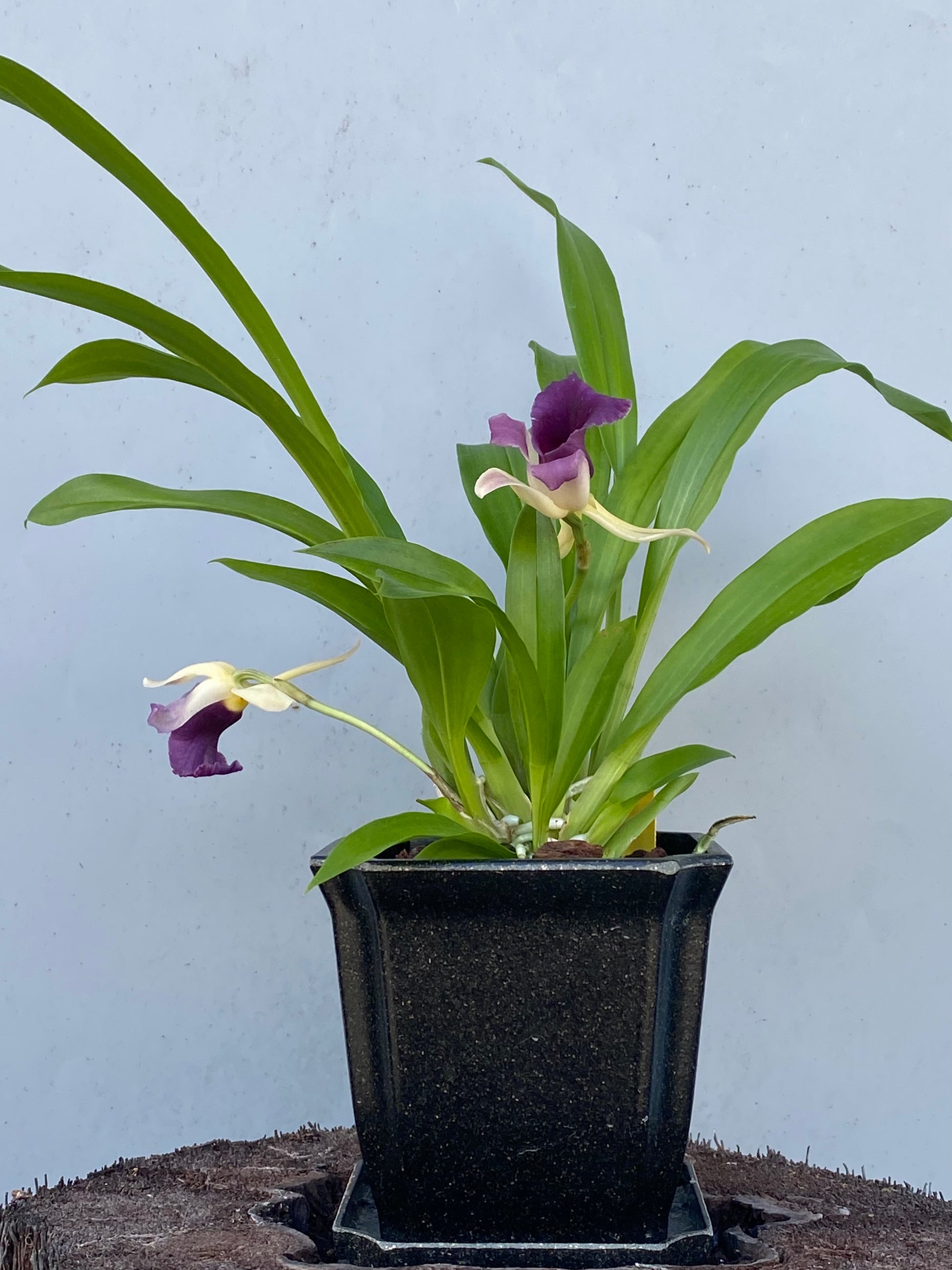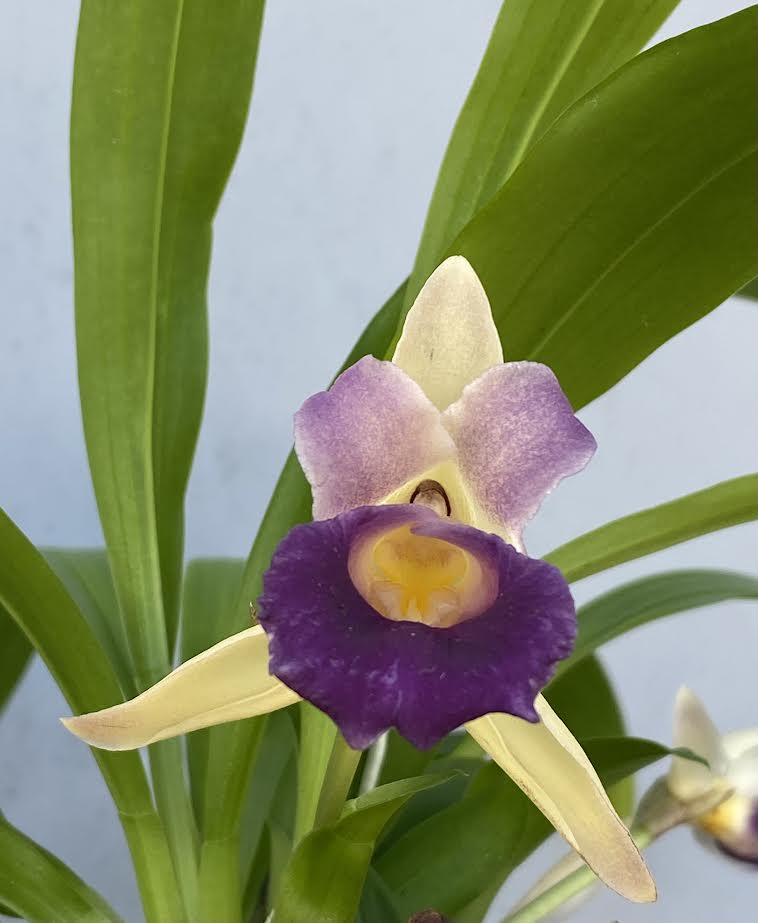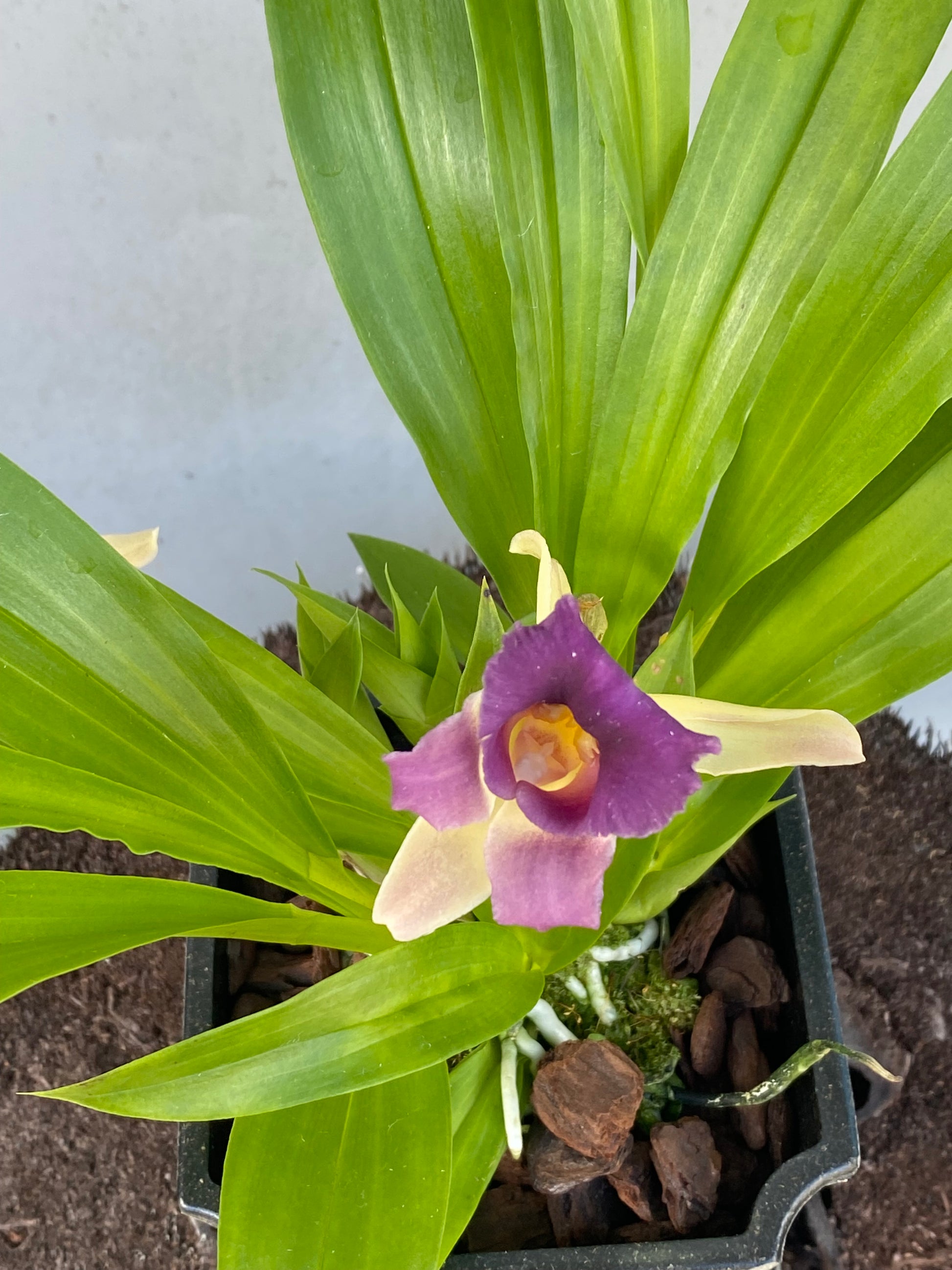Kalapana Orchid Farm
Cochleanthes discolor x sib in 5" eco pot
Cochleanthes discolor x sib in 5" eco pot
Couldn't load pickup availability
This fascinating orchid, Cochleanthes discolor, certainly lives up to its name. The term "discolor" in Latin means "of different colors," which perfectly captures the striking contrast of its blooms. You may also see this plant under its currently accepted botanical name, Warczewiczella discolor, but don't let the tongue-twister of a name intimidate you; the plant itself is a joy.
This is a species orchid with a widespread distribution, calling the humid, montane forests of Costa Rica, Panama, Cuba, Honduras, Colombia, Venezuela, and Ecuador home. It typically grows as an epiphyte at elevations around 3,000 ft., where it enjoys consistent moisture, good air movement, and the filtered light of the forest canopy. This natural habitat gives us all the clues we need for its successful cultivation, pointing towards intermediate temperatures and high humidity.
The flowers are the main attraction, and they do not disappoint. Emerging one at a time on short spikes from the base of the leaves, each bloom is a work of art. The sepals and petals are a soft, greenish-white or a creamy buttery yellow, creating a perfect backdrop for the magnificent lip. The lip is the star of the show, a velvety, deep indigo-violet or rich purple that creates a dramatic and beautiful contrast. The flowers, typically 1.5 to 2 inches across, are not just a visual treat; they also possess a unique and subtle fragrance with spicy and herbaceous notes. It's no wonder this species has been recognized by the American Orchid Society, earning a Certificate of Cultural Merit (CCM/AOS) for well-grown and flowered specimens.
Botanically, Cochleanthes discolor is quite distinctive. It's a sympodial orchid that grows in a clumping habit, forming attractive, fan-like growths of soft, pleated leaves. A key feature is its lack of pseudobulbs, the water-storing organs found in many other orchids. This is a critical point, as it means the plant is not tolerant of being dry for extended periods. The glossy, light green leaves can grow up to a foot long, creating a lush, compact plant that is attractive even when not in bloom. It can flower at various times of the year, often producing blooms in succession from a single growth.
Care Instructions
Light: Provide low to medium, filtered light. An east-facing window is ideal, but avoid direct southern exposure, which can burn the delicate leaves.
Water: This orchid must be kept consistently moist. The potting medium should never be allowed to dry out completely. Water frequently, ensuring good drainage to prevent root rot.
Temperature: Intermediate temperatures are ideal. Aim for daytime temperatures of 70-80°F (21-27°C) and nighttime lows of 55-65°F (13-18°C).
Humidity: High humidity is crucial, preferably between 50% and 70%. Good air circulation is important to prevent fungal and bacterial issues.
Potting Medium: Use a moisture-retentive potting mix that still allows for good drainage. Sphagnum moss or a fine-grade fir bark mix with perlite and charcoal are excellent choices. Repot every two years or when the medium begins to decompose.
Offered in 5" eco pots.
Share
